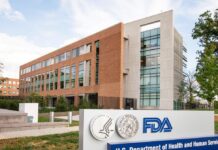“We’re getting our information the way everyone else is, in the media,” Pelosi said on CBS’s “Face the Nation.”
As for talks over another pandemic bailout, Pelosi likewise said she is awaiting word from the White House, indicating the administration owes her answers on whether it will accept the latest terms from House Democrats. “We want to see that they will agree on what we need to do to crush the virus so that we can open the economy and open our schools safely,” the speaker said.
Trump, tweeting from the hospital on Saturday, indicated he wants to reach a deal.
It was arguably his strongest endorsement yet of another round of economic relief for a faltering recovery.
Significant hurdles remain.
The two sides remain at odds over the price tag for the whole measure. House Democrats approved a $2.2 trillion package late Thursday; Treasury Secretary Steven Mnuchin, one of Trump’s top deputies on the matter, has put forward a roughly $1.6 trillion offer. And the two sides remain at odds over assistance for state and local governments, federal unemployment benefits, aid to children and families, and testing and tracing.
Pelosi on CBS said a deal coming together this week depends on whether administration officials “understand what we have to do to crush the virus. You can’t just say, ‘We need to do something, but we’re going to let the virus run free.’ Now it’s even run free in the White House.”
Negotiators face a shrinking window. The Senate is not scheduled to return until Oct. 19. Supreme Court confirmation hearings for Amy Coney Barrett are set to begin in the Senate Judiciary Committee on Oct. 12 and will dominate what remains of senators’ attention for non-election business. And any deal Pelosi strikes with the administration will also need to pass muster with Senate Republicans, who have been more resistant to new spending than the White House. The calculus is even further confused since three Republican senators have also tested positive, and others are quarantining due to possible exposure.
But Trump’s infection could give the talks a boost.
Pelosi herself suggested as much in a Friday interview with MSNBC. “This kind of changes the dynamic because here they see the reality of what we have been saying all along — this is a vicious virus,” she said.
Compass Point analyst Isaac Boltansky agrees. The spread of the disease among top Republicansand a slowing economy “serve as stark reminders that neither the health nor economic fallout from the virus have been contained,” he writes in a Sunday note. “We view these developments as directionally positive for the prospects for a stimulus deal.”
Meanwhile, a stumbling economic recovery is signaling the need for more help from Washington. The economy still has about 11 million fewer jobs now than it did before the pandemic struck. A sharp labor rebound this spring started losing momentum over the summer, and the September jobs report out Friday showed that grind continues.
From the New York Times’s Neil Irwin:
“We see no reason to expect this trend to change,” Pantheon Macroeconomics chief economist Ian Shepherdson wrote in a Sunday note. “The economic recovery is the conjoined twin of the virus story, and U.S. cases and hospitalizations are rising.”
Market movers
Traders brace for more turmoil.
Trump’s health and the lackluster prospects for stimulus remain in focus: “Market volatility jumped Friday as financial markets initially reacted to news of Trump’s diagnosis in a risk-averse manner. U.S. stock futures slid, Treasury rates fell and the yen advanced, although there was a reversal in these moves as the day wore on,” Bloomberg News’s Justin Carrigan reports.
“Traders may obsess over Trump’s medical bulletins in coming days and the complexities that his illness brings to an already divisive presidential election campaign, but the ultimate impact on financial assets is not clear cut. Trump may be discharged from the hospital as soon as Monday as he recuperates from covid-19, one of his doctors said Sunday, though they revealed he’s been administered a medicine to control inflammation.”
- Markets look bullish overnight: “Futures on the Dow Jones Industrial Average rose 150 points, or 0.55%. The move implied an opening gain of about 157 points. The S&P 500 futures rose 0.5%. Nasdaq 100 futures gained 0.9%,” CNBC’s Yun Li reports.
The stocks most vulnerable to a Biden White House: “Major U.S. technology stocks look vulnerable to a corporate-tax increase that might result from a Democratic sweep in November, potentially undermining one of the strongest drivers of the market’s recovery this year,” the Wall Street Journal’s Karen Langley reports.
“Biden’s tax plan would lead to estimated double-digit percentage declines in profits for the information-technology, communication-services and consumer-discretionary sectors, BofA’s analysis found. Those groups, which are leading the charge in the S&P 500 this year, are home to Apple Inc. Microsoft Corp., Google parent Alphabet Inc., Facebook Inc. and Amazon.com Inc.” (Amazon CEO Jeff Bezos owns The Washington Post.)
Rock-bottom interest rates have left their mark: “Consumers have snapped up zero percent auto loans and mortgages at sub-3 percent rates. That’s helped the economy by driving sales of new homes and automobiles,” David J. Lynch writes.
“Depressed rates also have fueled a rise in corporate and government debt, aggravated trends toward greater inequality and left a wounded economy more dependent on fiscal support from lawmakers at a time when Congress is intensely polarized … Once an emergency remedy for economic collapse, ultralow rates now are a fixture of the U.S. landscape. It may be a decade, perhaps longer, before they return to the levels seen in the 1990s and early 2000s, economists said.”
Coronavirus fallout
The White House continues to spread confusion over Trump’s health.
The president added to mixed messages by breaking out of quarantine: “The White House continued to provide limited and contradictory information about Trump’s health, saying that he had begun a steroid treatment after twice suffering bouts of low oxygen but also contending that he was doing well and could soon be discharged from the hospital where he is being treated for the novel coronavirus,” Toluse Olorunnipa, Josh Dawsey and Amy Goldstein report.
“Adding to the confusion about his status, Trump briefly left Walter Reed National Military Medical Center in Bethesda to wave to supporters from a motorcade, after releasing a video on Twitter thanking people who had gathered outside the facility … At a news conference earlier Sunday, Trump’s medical team tried to clear up the muddled picture it had created the previous day when White House doctor Sean Conley falsely suggested that Trump had not been given supplemental oxygen.”
More from the United States:
- More temporary layoffs became permanent: “There are now 4.5 million people looking for work. That includes 742,000 who have had temporary jobs come to an end, and 3.8 million who have lost permanent jobs. The number of permanent job losers among the unemployed has more than doubled in the last six months, the fastest pace of increase on record,” CNN Business’s Chris Isidore reports.
- New York City shuts down businesses, schools in parts of Queens, Brooklyn. With infections in the city mounting, “Mayor Bill de Blasio announced an emergency crackdown, saying that he intended to impose new restrictions in 20 hot spots in Brooklyn and Queens that have been experiencing rising positivity rates,” the New York Times reports. “The plan is a major setback for New York City, amounting to the first significant reversal in the reopening and offering further evidence of the challenges in curbing the pandemic.”
- Hospitalizations grow in the Midwest: “Six states reached record high covid-19 hospitalizations, based on a weekly average to smooth out the reporting, as of Friday … Most of the states are based in the Midwest, including Missouri, Wisconsin, North Dakota and South Dakota,” CNBC’s Noah Higgins-Dunn reports.
- Three House panels launch joint investigation into Pentagon’s relief spending: “The investigation comes after The Washington Post reported that the Pentagon began funneling the funds to private companies building military supplies shortly after Congress set aside the money in the $2 trillion Cares Act in March,” Yeganeh Torbati and Aaron Gregg report.
From the corporate front:
- Regal Cinemas will shut down all of its U.S. theaters: “Cineworld, Regal’s parent, will close all of its UK and U.S. movie theaters later this week, leaving as many as 45,000 workers unemployed for the foreseeable future as it strives to survive the impact of the coronavirus on the film industry,” Reuters’s Muvija M and Yadarisa Shabong report. Regal is the second largest chain in the U.S.
- Halloween stores are worried about the lack of business: “Costume shops, party stores and seasonal pop-ups that rely on Halloween for the bulk of their profits say they’re bracing for a steep drop-off in sales that could tip them into insolvency. Halloween spending is expected to fall 8 percent, to $8.05 billion, with costume sales accounting for much of the decline, according to the National Retail Federation,” Abha Bhattarai reports.
- Pope Francis says the pandemic proves free markets alone fail society: “In an encyclical on the theme of human fraternity, Francis also said private property cannot be considered an absolute right in all cases where some lived extravagantly while others had nothing. Francis denounced ‘this dogma of neo-liberal faith’ that resorts to ‘the magic theories of ‘spillover’ or ‘trickle’ … as the only solution to societal problems.’ A good economic policy, he said, ‘makes it possible for jobs to be created and not cut,’” Reuters’s Philip Pullella reports.
- France to close Paris bars: “The French government is planning to shut down bars in the Paris region and impose other new restrictions in the area as the country struggles to contain a spike of new cases and avoid a second nationwide lockdown …,” Bloomberg News’s Albertina Torsoli reports.
Campaign 2020
A nearly 8 percent jobless rates spells trouble for Trump.
Even a large drop might not be enough to save the president: “The U.S. unemployment rate fell to 7.9 percent in September, from 8.4 percent in August, a big drop that in normal times would be welcome news for a presidential incumbent seeking reelection in just over a month,” Reuters’s Ann Saphir reports.
“The jobless rate was nearly as high as it is now when voters picked Jimmy Carter, a Democrat, over Republican President Gerald Ford in 1976, when Carter lost to Republican challenger Ronald Reagan in 1980, and when Democratic Arkansas Governor Bill Clinton ousted Republican President George H.W. Bush in 1992. It was also nearly as high when Americans reelected Democratic President Barack Obama in 2012.”
Chart topper
Daybook
- The Institute for Supply Management releases its latest supply of purchasing managers in the private sector
- Fed Chair Jay Powell speaks via webcast at the National Association for Business Economics’s annual meeting
- The Census Bureau releases the latest monthly trade numbers
- The Fed’s FOMC releases minutes of its September meeting
- The Labor Department releases weekly jobless claims








